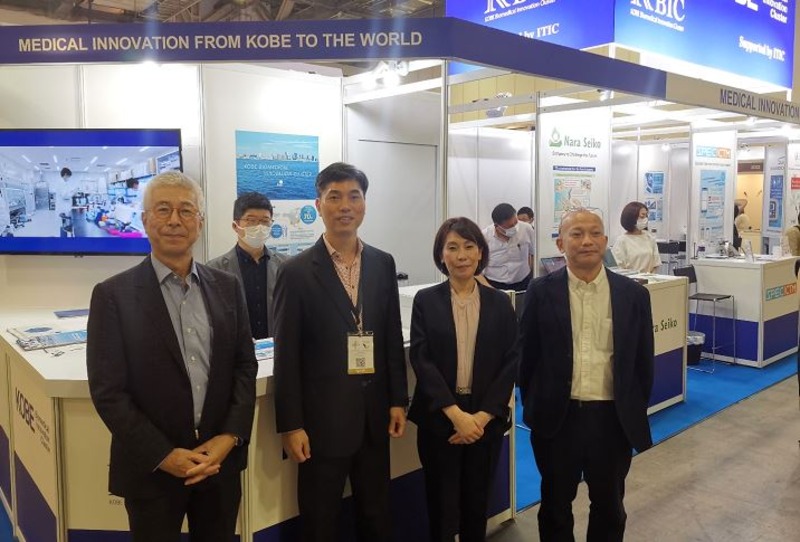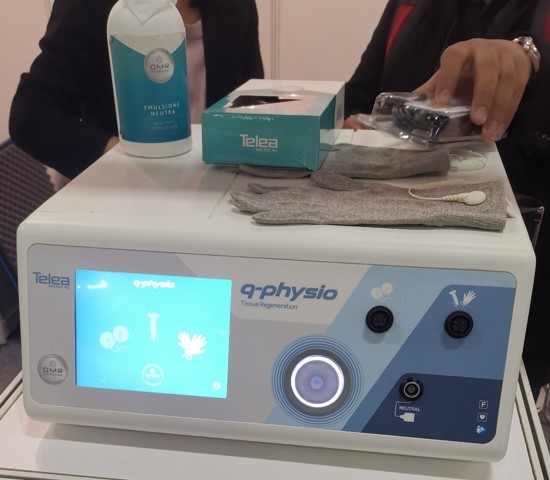Great Touch
We finally get to be in touch – literally. Medical Fair Asia returns to Singapore
The 14th edition was all about reimagining the marketplace amidst an evolving landscape. The new experience – a live 3-day exhibition in Marina Bay Sands, Singapore – ensured exhibitors and visitors could continue networking and doing business. The event brings brought together a high-quality audience from the healthcare markets of Asia and included the Start-Up Park, Community Care Pavilion – with a special focus on Mental Health, and the debut of the all-new Pandemic Management zone.
Access-2-Healthcare has been attending Medical Fair Asia since 2016, and interestingly some of the people we met back then are still in contact with us today.
A quick scan of the exhibition hall estimated about 600+ booths, mainly SMEs, with a good spotlight on start-ups, and limited presence by Publications and Consulting. Various country government Trade Enterprises were all active with their own country pavilions, to showcase a curated group of companies that were all keen to expand overseas. There were pavilions for Germany, Austria, Italy, France, the UK, Spain, US (Florida), as well as for Taiwan (two of them), China, South Korea, Singapore (several), Malaysia, and Thailand.
While it appeared to be a relatively small exhibition, there was much diversity, and more importantly, allowed participants and visitors to interact and engage.
On the first day and especially from the opening ceremony to the early afternoon, there was this buzz – a sense of euphoria perhaps stemming from not having large-scale f2f meetings for quite some time.
On the first day and especially from the opening ceremony to the early afternoon, there was this buzz – a sense of euphoria perhaps stemming from not having large-scale f2f meetings for quite some time.
Japan and Canada made a great showing this year
Devices didn’t really have anything earth-shattering, but there were several nifty solutions that showed up. The fair allowed various manufacturers to view the competition and gain more product feedback. Some of the ones we liked:
D-Heart from Italy had a patented leads extension, and retraction system that was easy to use and improved patient safety – no more messy ECG cables! It also had the usual connectivity as other state-of-the-art ECG and weighs approximately 150g.
Q-physio uses QMR (quantum magnetic resonance) to channel electrical impulses to the applicators to various tissues for rehabilitation from injury or other chronic conditions. Note the gloves above the device – that is wired to the generator and energy channels through the fingers (that acts as an applicator) as the physio massages the patient! A flexible detector is on the other (bed) side.
Advanced Ultrasound with a smaller form factor and large displays, from Wisonic, China.K
SPEC, One of the first companies from Japan we met back in 2017 – and their software mobile platform has gone from strength to strength. KARADAkarada is downloadable from the App Store and Google Play. Now adding AI software to improve the prediction and starting to connect to various devices such as one for ovulation prediction.
Trying out the latest AR/VR experience for diabetic retinopathy education, from KOVR labs, Canada

Getting my carotid done by the cost-effective and highly functional ultrasounds by Strena Medical
Low-frequency electrotherapy device by Homer Ion Laboratory, based in Japan

We saw many of our Friends from Japan (Tokyo SME, KBIC, Saitama City), who were in town in numbers.

















